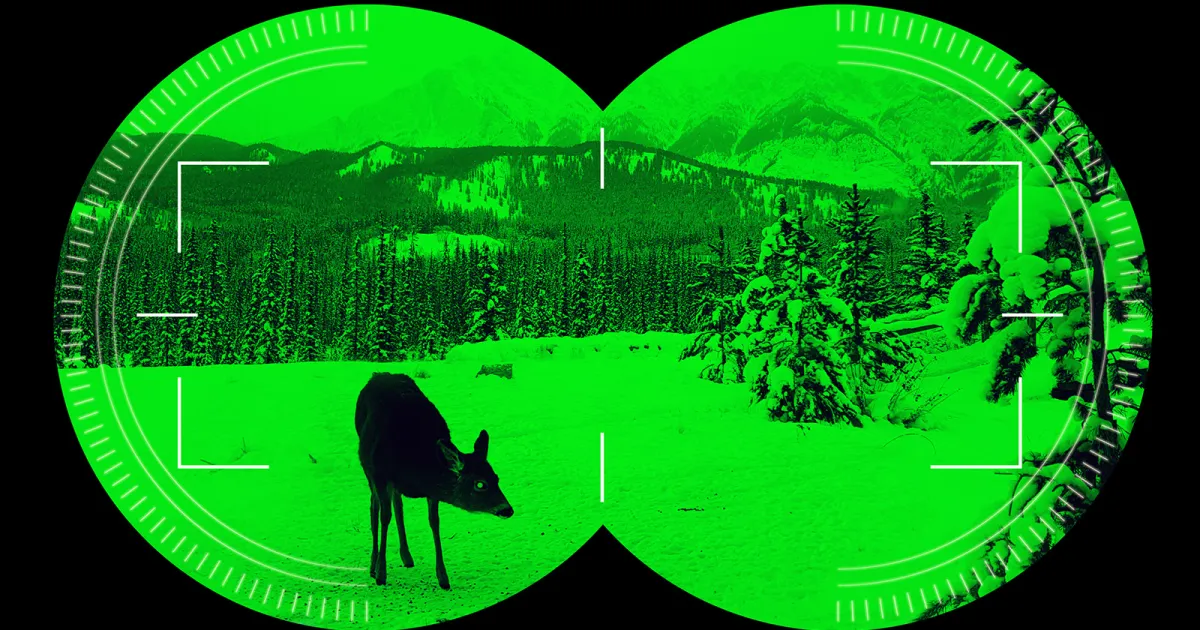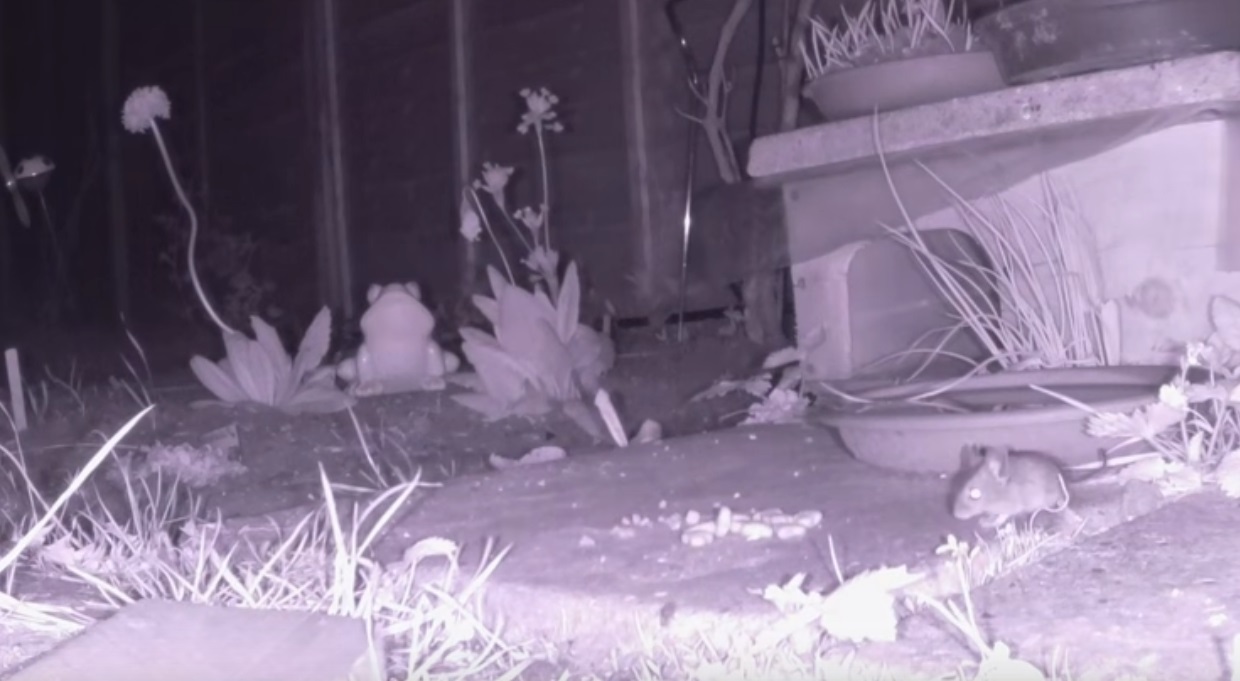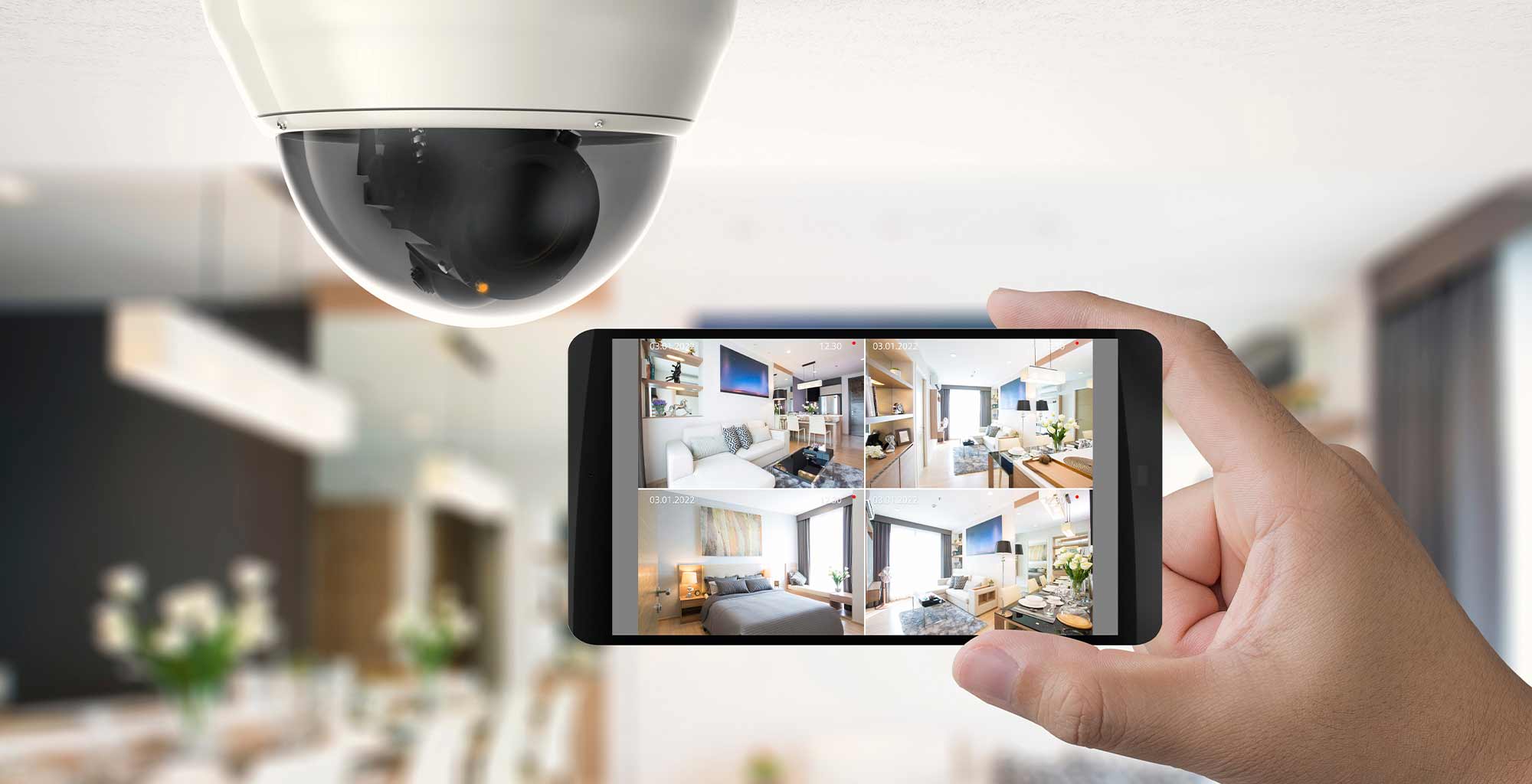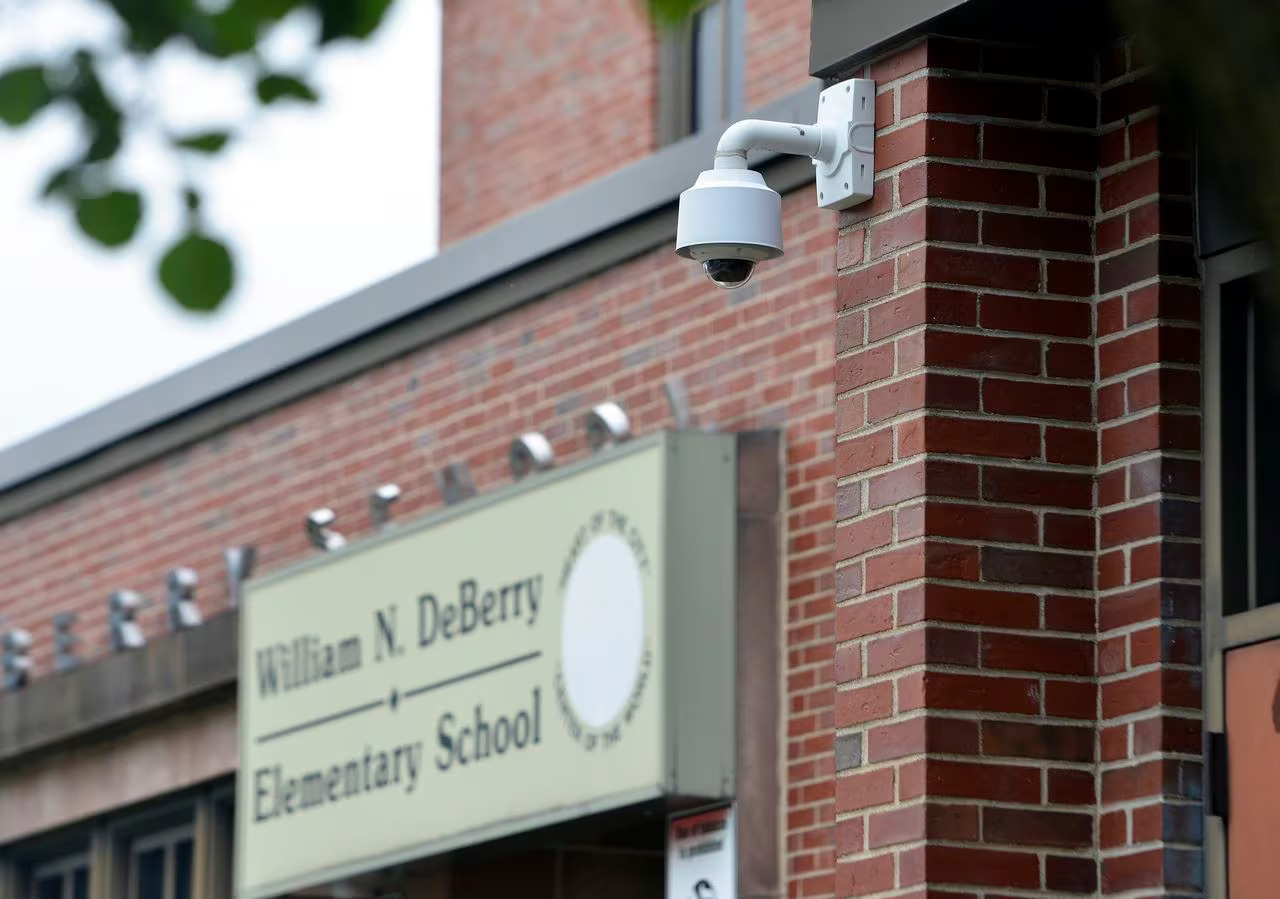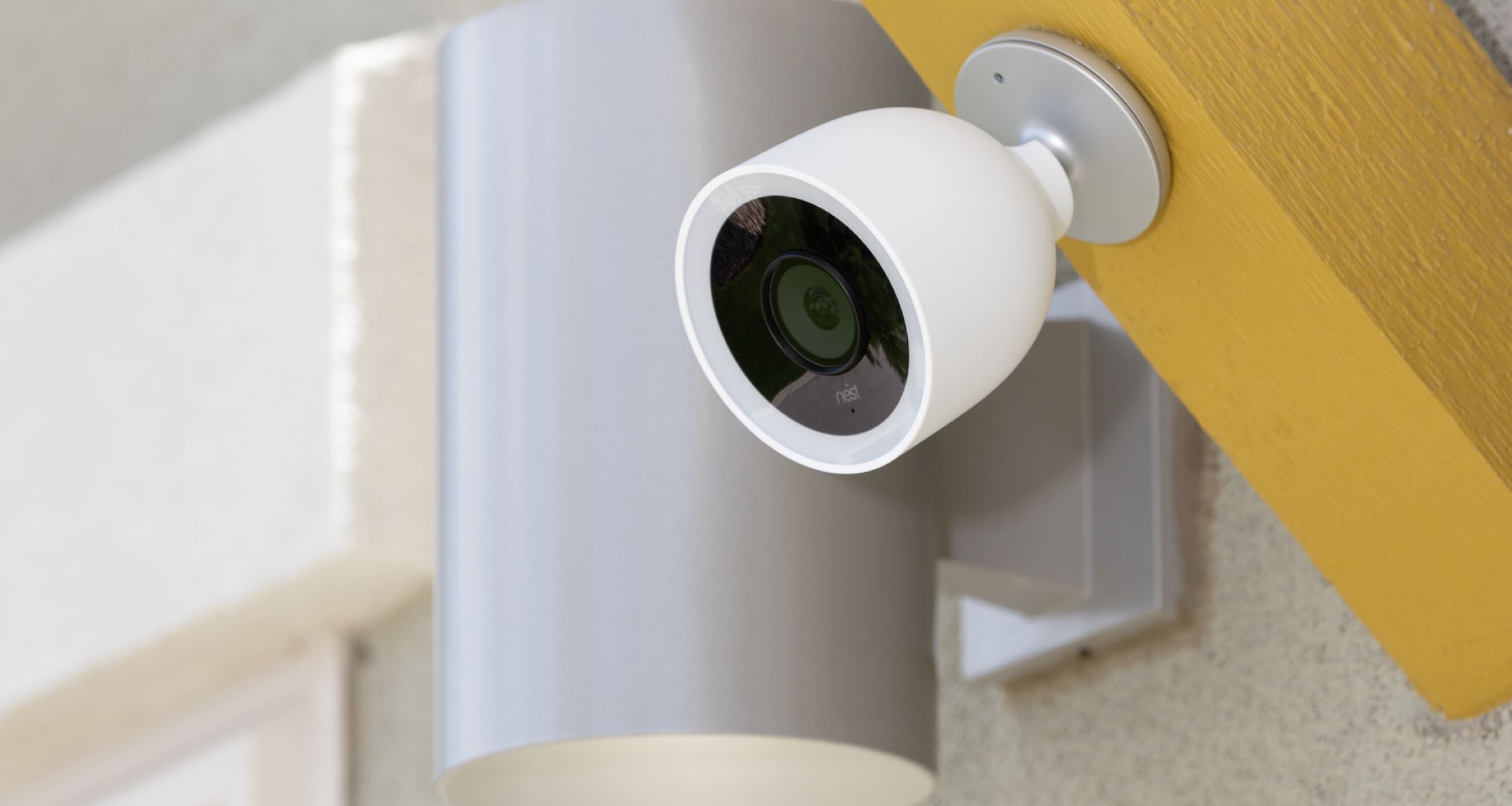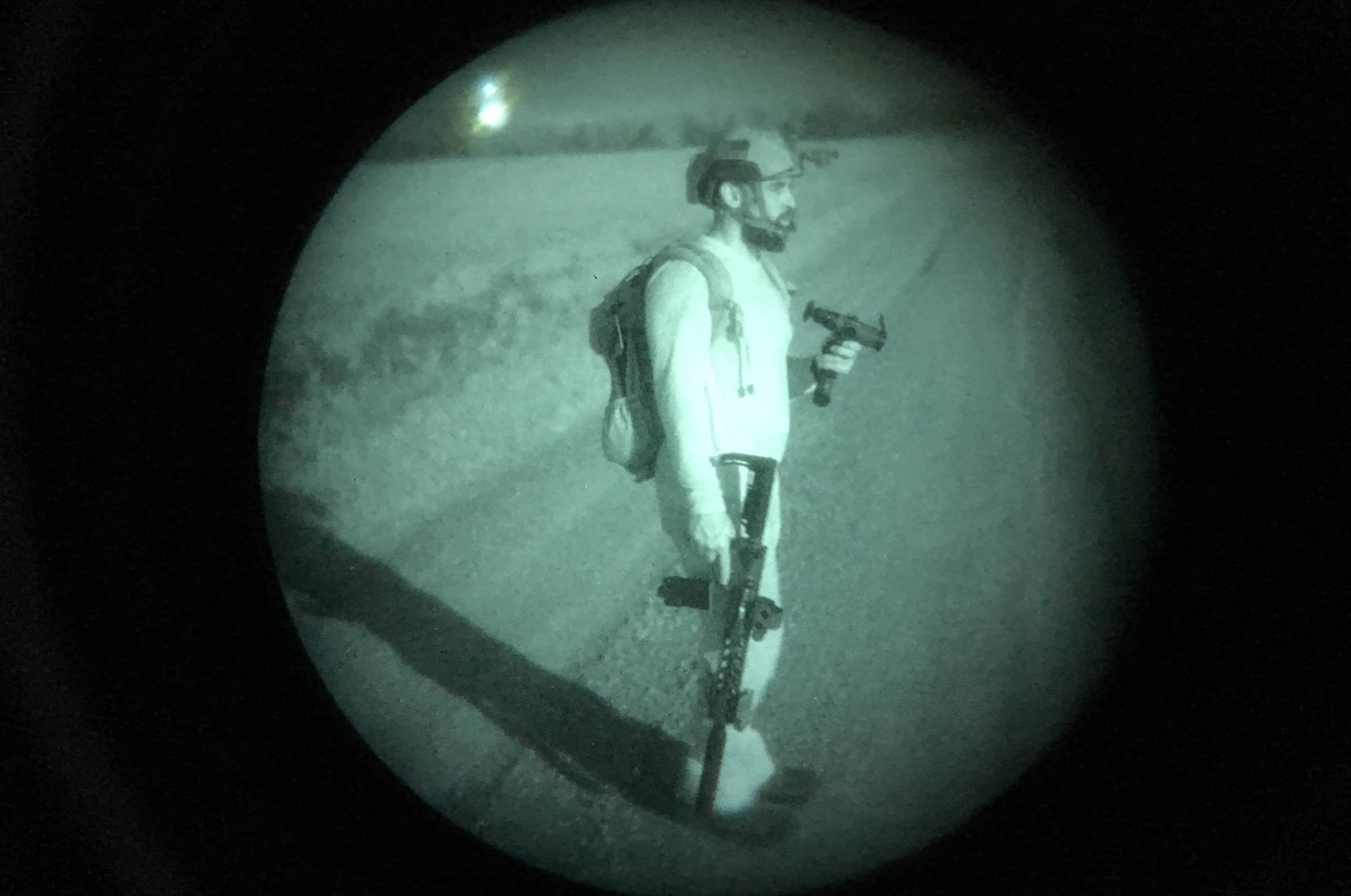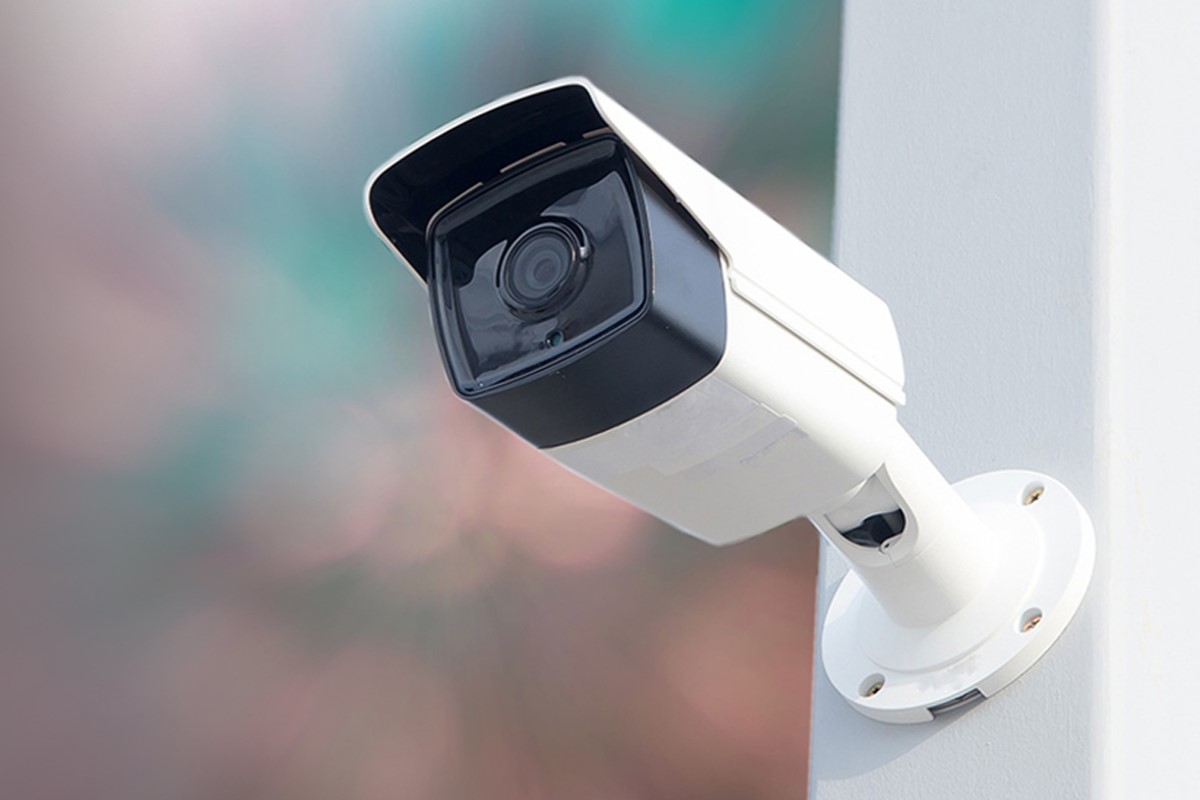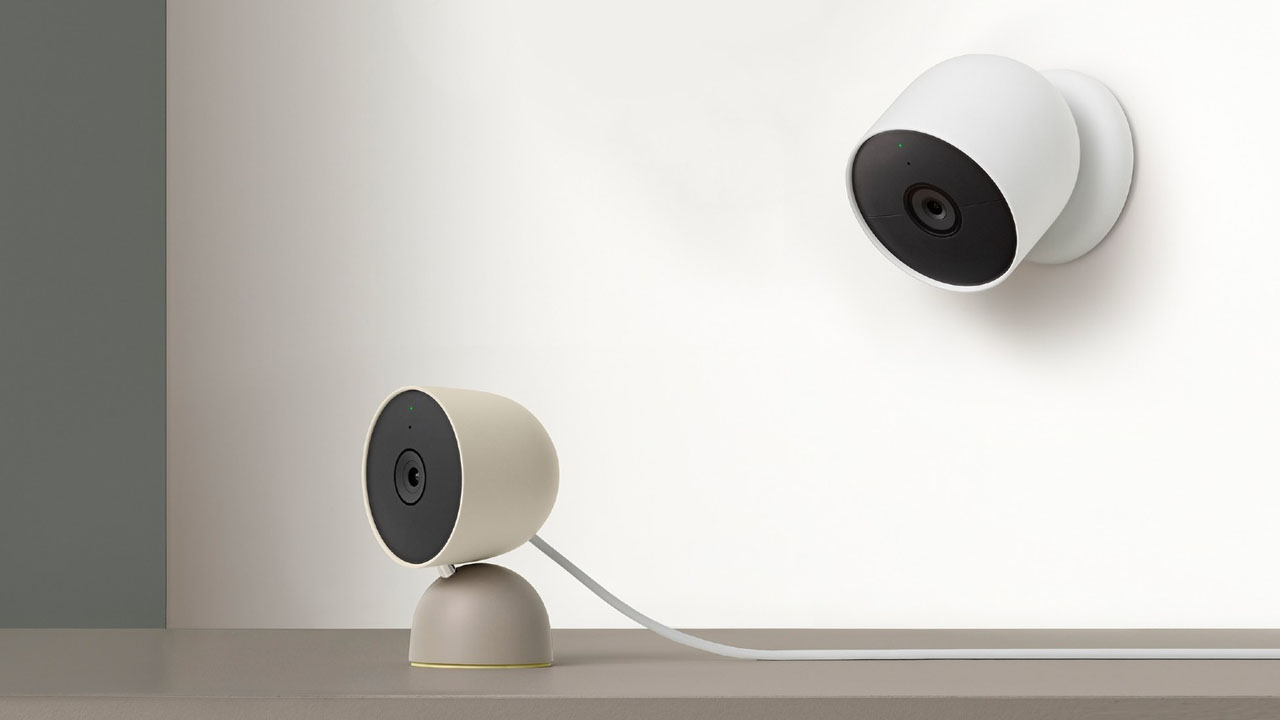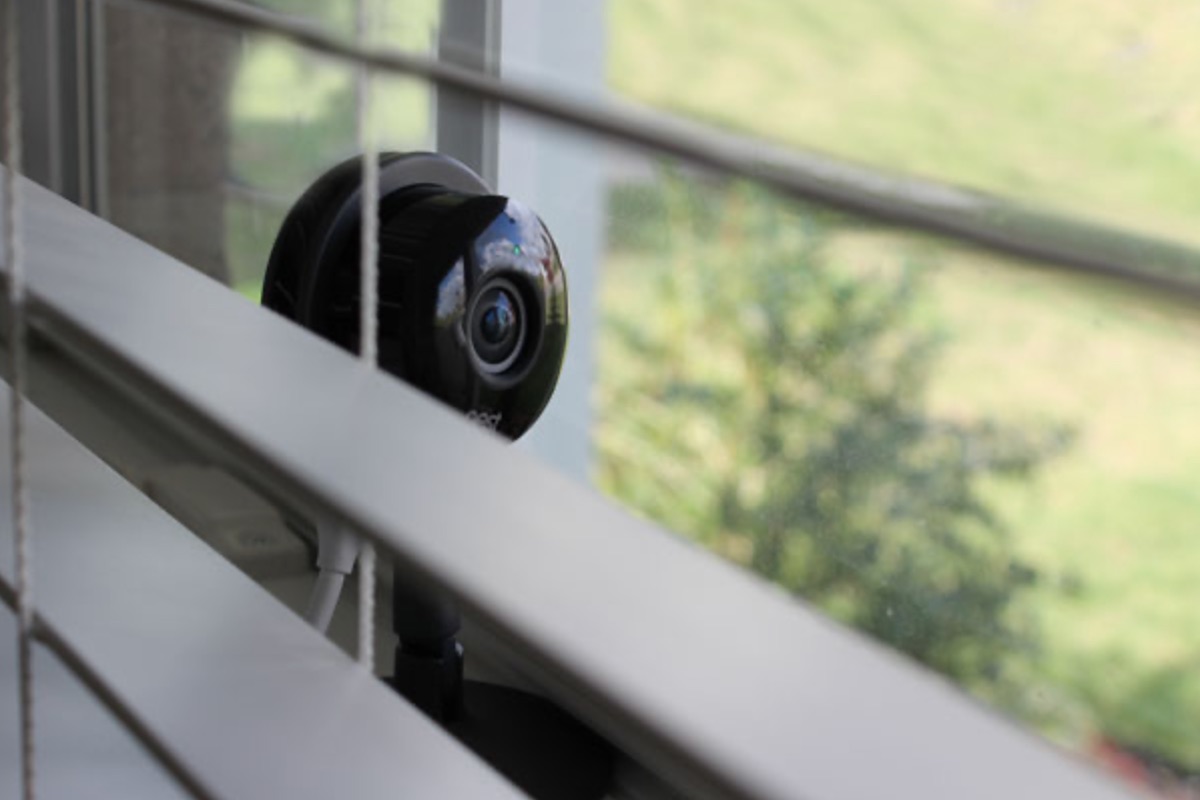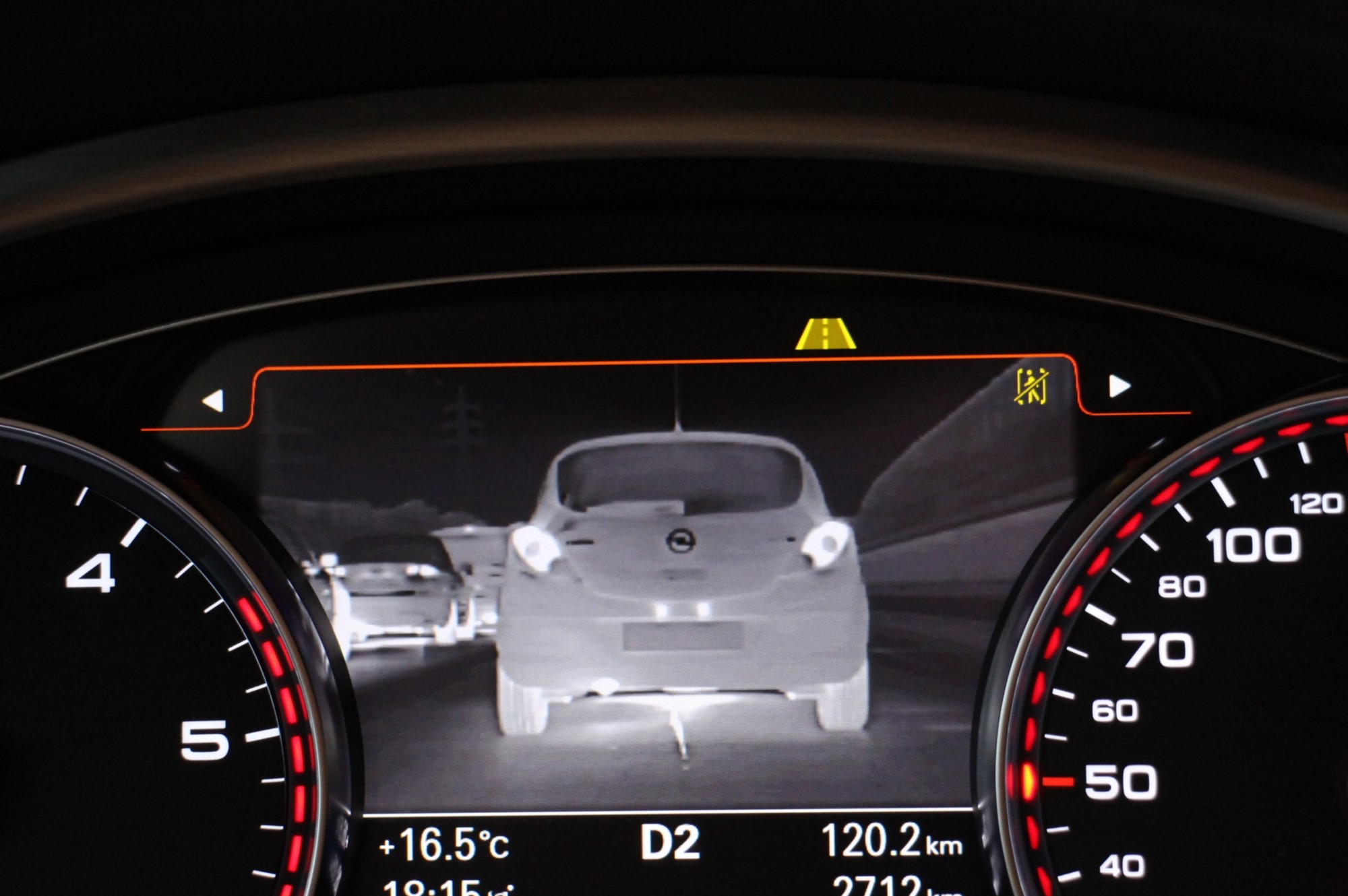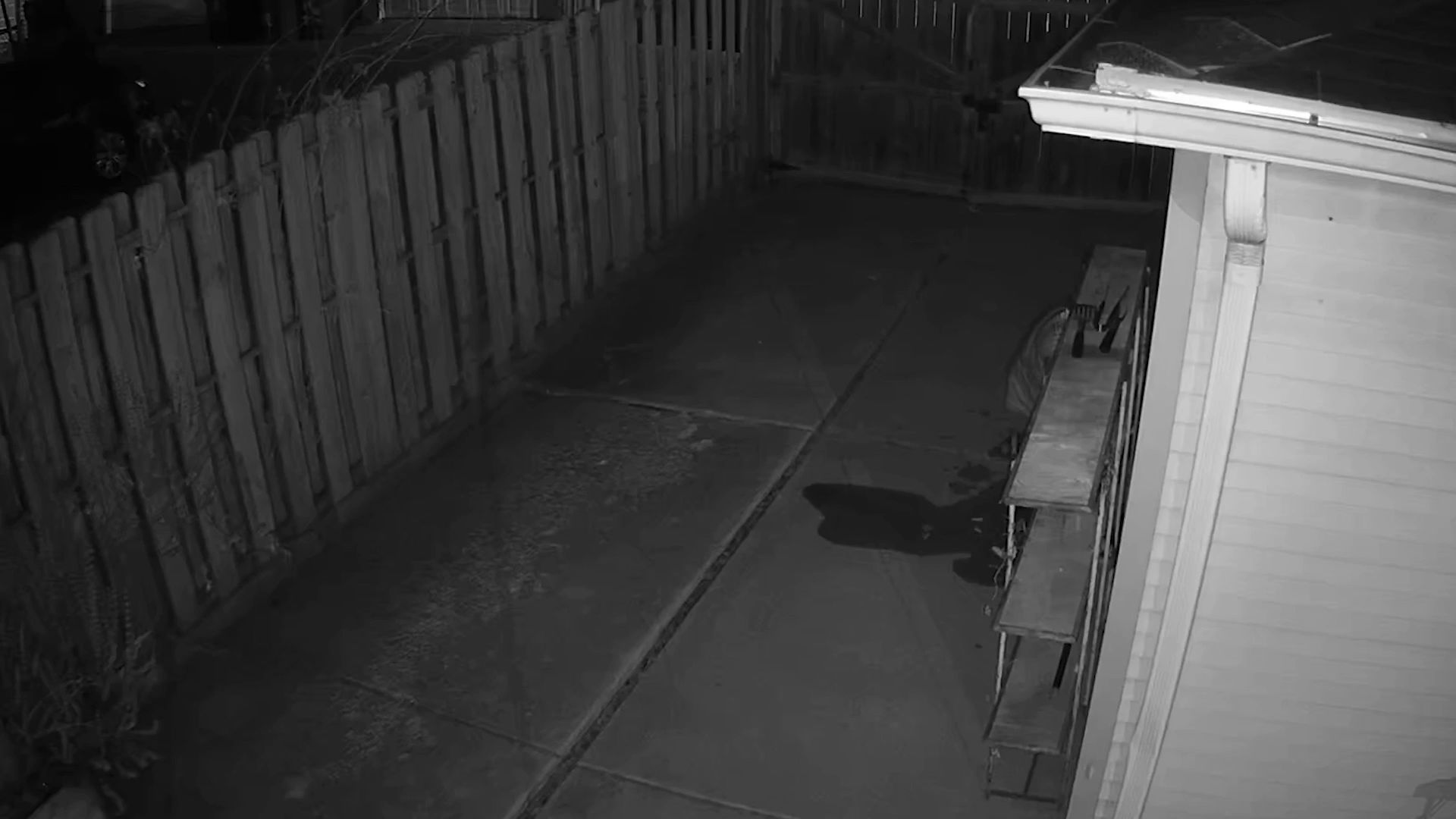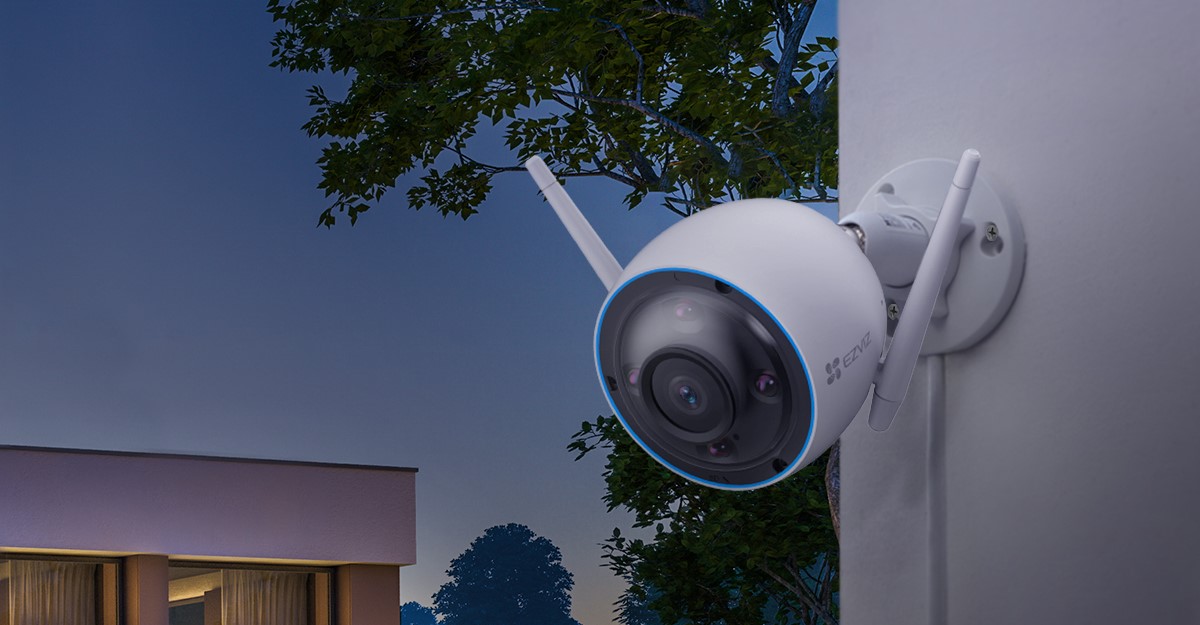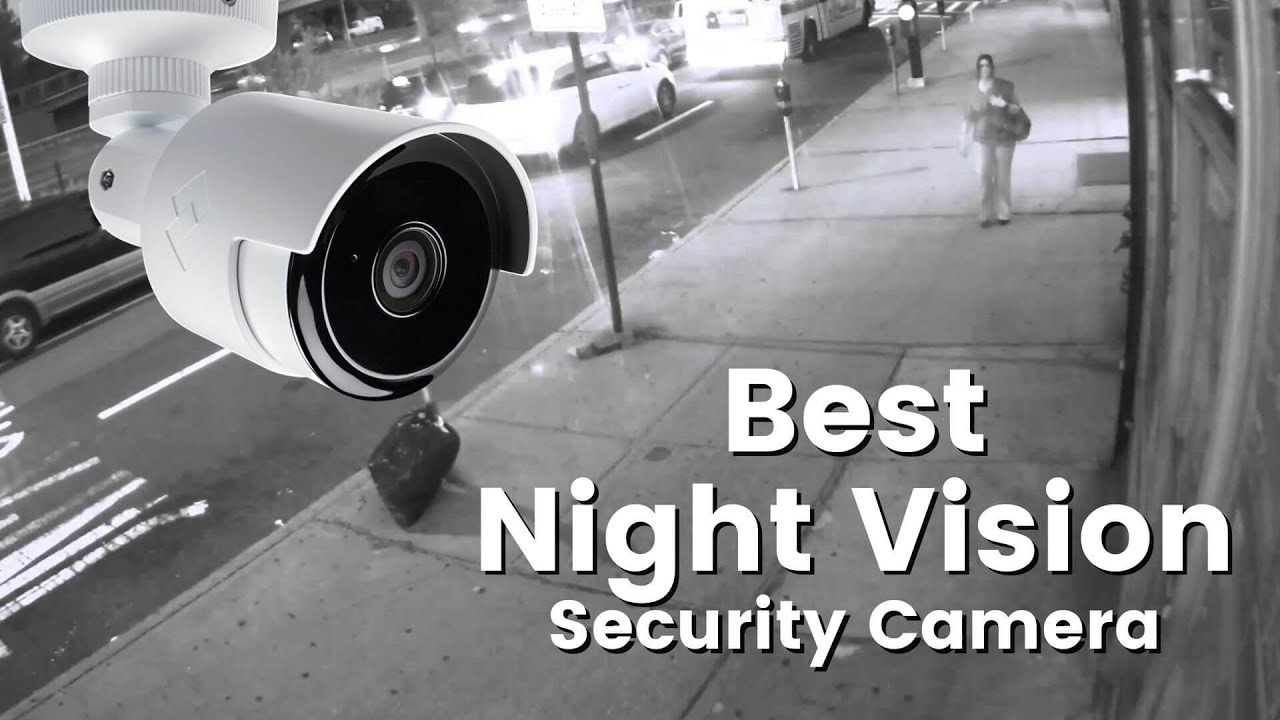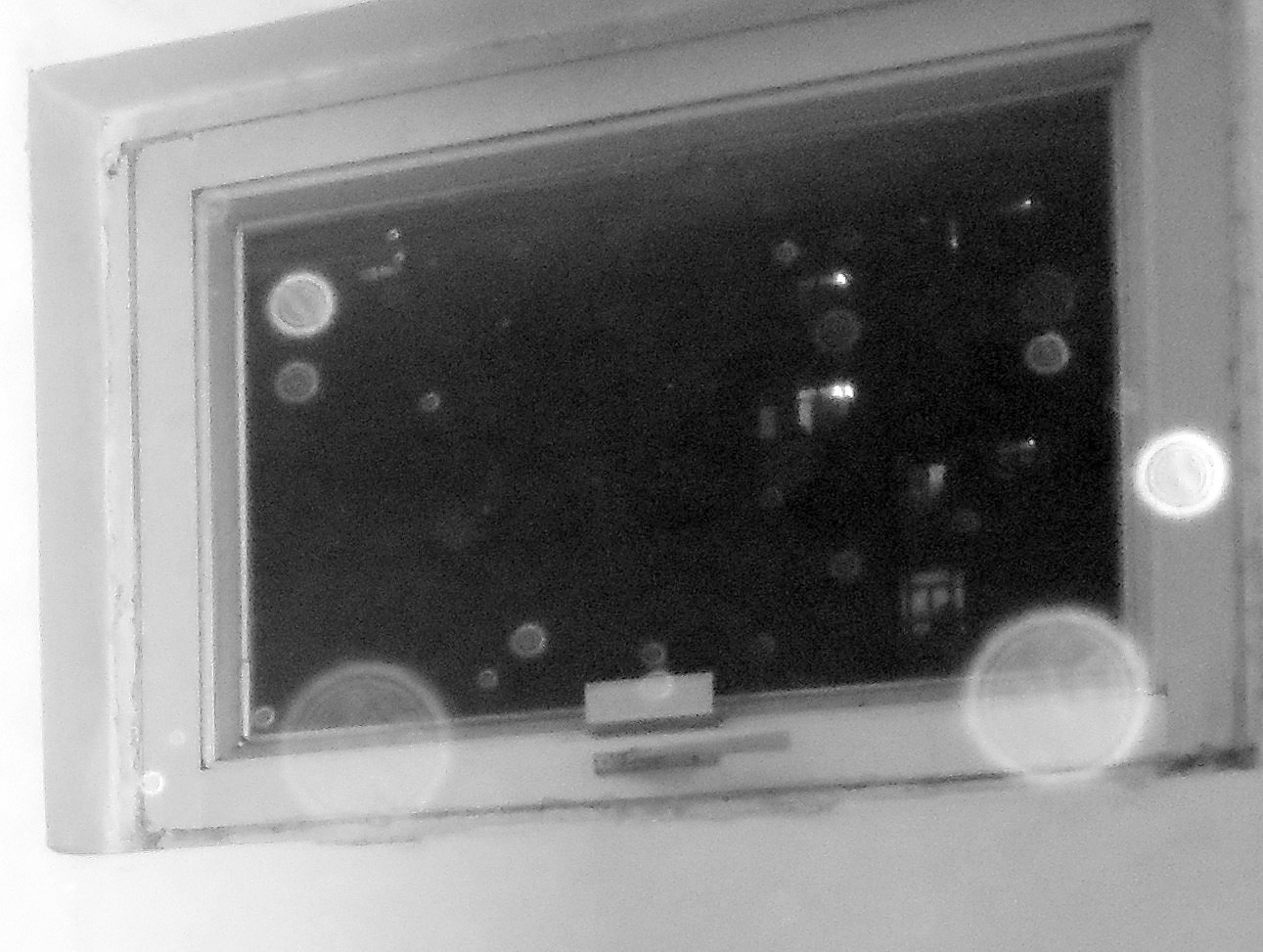Home>Home Security and Surveillance>How Far Can Night Vision Cameras See
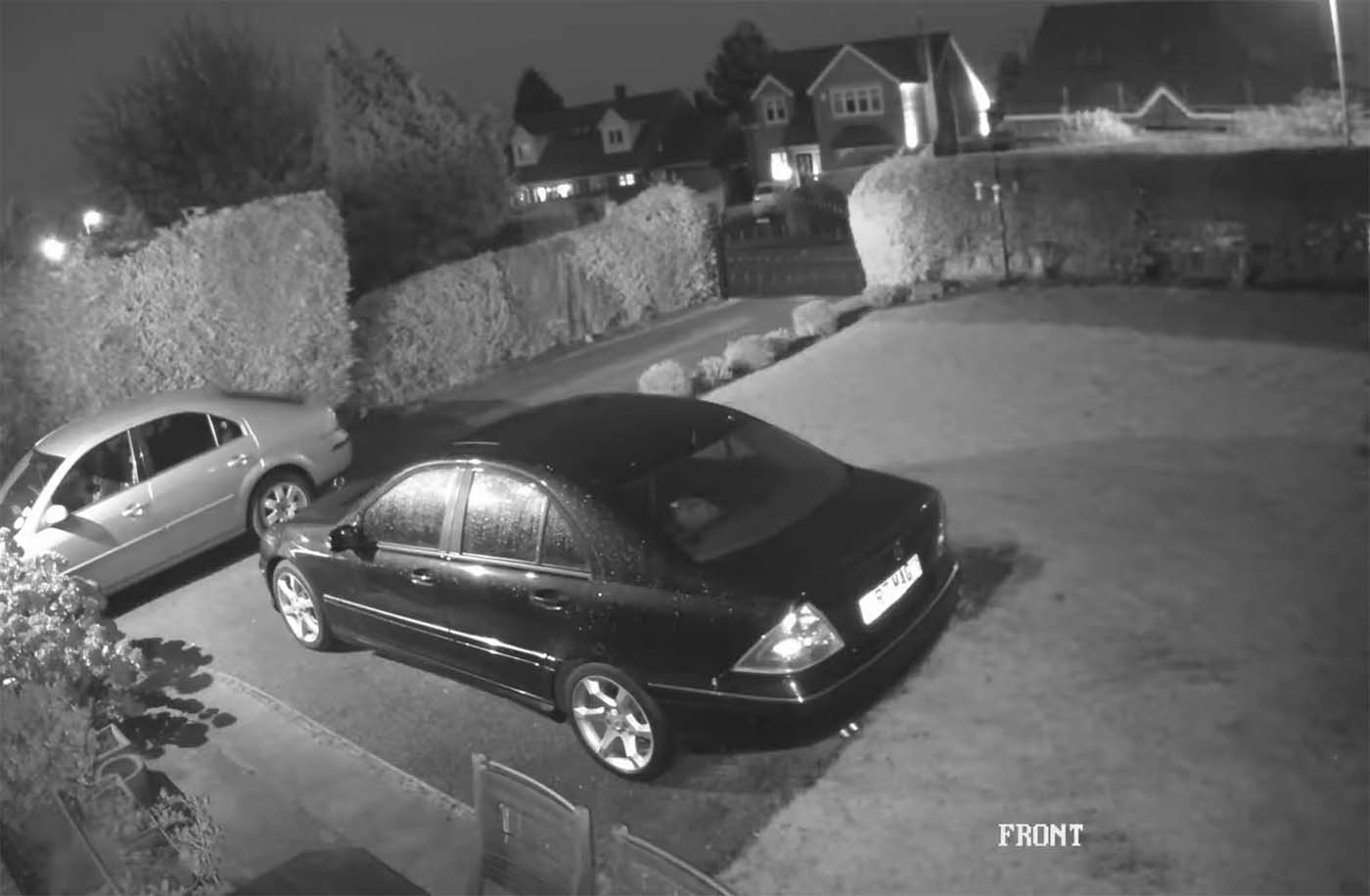

Home Security and Surveillance
How Far Can Night Vision Cameras See
Modified: October 20, 2024
Improve your home security and surveillance with night vision cameras. Discover how far these advanced cameras can see in the dark.
(Many of the links in this article redirect to a specific reviewed product. Your purchase of these products through affiliate links helps to generate commission for Storables.com, at no extra cost. Learn more)
Introduction: Night Vision Cameras and their Capabilities
Night vision cameras have revolutionized the field of home security and surveillance, allowing homeowners to monitor their properties even in low-light or complete darkness. These advanced cameras utilize cutting-edge technology to capture clear images and video footage in conditions where traditional cameras would fail.
One of the key features of night vision cameras is their ability to provide visibility and detection in environments with little to no ambient light. They achieve this through the use of infrared (IR) technology, which illuminates the scene with invisible infrared light and captures the reflected light using specialized sensors. This process enables the camera to create a clear image of the surroundings, even in pitch-black darkness.
With the increasing sophistication of night vision camera technology, the capabilities of these devices have significantly improved over the years. Modern night vision cameras offer high resolution, wide-angle lenses, and adjustable focus settings, allowing for clear and detailed footage regardless of the lighting conditions.
Moreover, night vision cameras have the ability to detect motion, capturing any movement that occurs within their field of view. This feature provides an extra layer of security, alerting homeowners to potential threats or suspicious activities in real-time.
Furthermore, advanced night vision cameras often come equipped with additional features such as pan, tilt, and zoom capabilities, enabling users to remotely adjust the camera’s position and focus on specific areas of interest. This flexibility ensures that every corner of the property can be effectively monitored, enhancing overall security levels.
Overall, night vision cameras offer homeowners a comprehensive surveillance solution, allowing them to keep a watchful eye on their properties regardless of the time of day or the lighting conditions. By leveraging infrared technology and advanced features, these cameras provide a sense of security and peace of mind, ensuring that homeowners can protect their loved ones and valuable belongings.
Key Takeaways:
- Night vision cameras can see up to 100 feet in low-light conditions, providing homeowners with clear surveillance. They offer peace of mind by monitoring properties even in darkness.
- In complete darkness, night vision cameras can see up to 50 feet, with advanced models reaching 100 feet. They are useful for home security and practical applications like wildlife observation and search and rescue operations.
Read more: How Far Can A Security Camera See At Night
Factors Affecting Night Vision Camera Range
The range of a night vision camera, or how far it can see in complete darkness, is influenced by several factors. Understanding these factors can help homeowners make informed decisions when choosing the right night vision camera for their security needs.
1. Infrared Illumination Power: The strength of the infrared illumination emitted by a night vision camera directly impacts its range. A higher infrared power output will result in a longer range, allowing the camera to capture clear images at greater distances.
2. Lens Quality: The quality of the lens plays a crucial role in determining the clarity and range of the night vision camera. A high-quality lens with a wide aperture can gather more light, enabling the camera to see objects further away with greater detail.
3. Sensor Sensitivity: The sensitivity of the camera’s sensor to infrared light affects its ability to capture clear images in low-light conditions. A more sensitive sensor will produce better results and extend the camera’s range.
4. Environmental Conditions: The ambient light levels and weather conditions in the surveillance area can impact the range of a night vision camera. In areas with higher levels of ambient light, such as urban environments, the camera’s range may be reduced. Additionally, factors like rain, fog, or smoke can limit visibility and affect the camera’s performance.
5. Obstructions and Reflective Surfaces: The presence of obstacles or reflective surfaces within the camera’s field of view can impact its range. Objects like trees, walls, or windows can obstruct the infrared light or cause reflections, reducing the camera’s ability to capture clear images at longer distances.
6. Camera Positioning and Field of View: The distance between the camera and the subject, as well as the camera’s field of view, directly affect its range. Placing the camera closer to the area of interest and adjusting the angle to cover a narrower field of view can improve the camera’s range and image clarity.
By considering these factors, homeowners can choose a night vision camera that meets their specific requirements. Factors like infrared illumination power, lens quality, sensor sensitivity, environmental conditions, obstructions, and camera positioning all play a role in determining the range and performance of a night vision camera, ensuring optimal security coverage for the property.
Infrared Illumination: Enhancing the Range of Night Vision Cameras
Infrared illumination is a critical component in night vision cameras, as it enables these devices to capture clear images and video footage in low-light or complete darkness. By emitting infrared light that is invisible to the human eye, night vision cameras can illuminate the scene and capture the reflected light using specialized sensors. This technology enhances the range and performance of these cameras, making them indispensable tools for home security and surveillance.
The infrared illumination capability of night vision cameras directly impacts their range. The greater the power and intensity of the infrared light emitted by the camera, the farther it can effectively see in the dark. Cameras with higher infrared power output can capture detailed images at greater distances, allowing homeowners to monitor larger areas or objects that are located farther away.
Most night vision cameras use built-in infrared LEDs (Light-Emitting Diodes) to provide the necessary illumination. These LEDs emit infrared light in a wavelength range that is invisible to the human eye, typically around 850nm or 940nm. The infrared light is projected onto the scene and bounces off objects and surfaces, creating a reflection that is then detected by the camera’s sensors. The camera processes this reflected light to generate a visible image or video, even in pitch-black darkness.
It is essential to note that the quality and arrangement of the infrared LEDs can also impact the range and performance of a night vision camera. An array of well-placed LEDs with a wide beam spread can ensure even illumination across the scene, increasing both the range and the consistency of the captured images. On the other hand, a poorly designed LED placement or low-quality LEDs may result in uneven illumination, reducing the camera’s effectiveness in capturing details at long distances.
Some advanced night vision cameras employ adjustable infrared illumination, allowing users to optimize the amount of infrared light emitted based on the specific surveillance needs. This feature enables homeowners to balance the power output to achieve maximum range or conserve energy when monitoring closer areas.
In addition to enhancing the range of night vision cameras, infrared illumination also has the advantage of being covert. Since the infrared light emitted is invisible to the human eye, the camera’s presence and operation can go unnoticed, providing a discreet surveillance solution for both indoor and outdoor applications.
Overall, infrared illumination plays a crucial role in enhancing the range and performance of night vision cameras. By emitting invisible infrared light and utilizing advanced sensors, these cameras can capture clear and detailed images and videos in low-light or no-light conditions. Whether it’s monitoring a large outdoor area or keeping an eye on specific objects or points of interest, night vision cameras with effective infrared illumination are an invaluable tool for ensuring the security and peace of mind of homeowners.
Night Vision Camera Technology: Understanding the Different Types
Night vision cameras utilize various technologies to capture clear images and video footage in low-light or complete darkness. Understanding the different types of night vision camera technology can help homeowners choose the right device for their specific security needs. Here are the three main types of night vision camera technology:
1. Image Intensifier Technology: Image intensifier technology is one of the earliest forms of night vision technology and is commonly used in traditional night vision devices. These devices work by amplifying the available light, including moonlight or ambient light, to make the scene appear brighter to the human eye. Image intensifier technology typically uses a vacuum tube that consists of a photocathode, microchannel plate, and phosphor screen. The incoming light is converted into electrons which pass through the microchannel plate, creating a multiplied and intensified image on the phosphor screen. While image intensifiers can provide a good level of visibility in low-light conditions, they are less effective in complete darkness.
2. Thermal Imaging Technology: Thermal imaging technology is based on detecting the differences in temperature of objects in the scene. Unlike image intensifier technology, thermal imaging cameras do not rely on visible light. Instead, they capture the infrared radiation emitted by objects or living beings. These cameras convert the heat signatures of objects into a visible image, where warmer objects appear as brighter spots. Thermal imaging cameras can provide clear images in complete darkness and are particularly useful for detecting heat signatures, such as intruders or animals, even in challenging conditions like thick smoke or dense foliage.
3. Infrared Illumination Technology: Infrared illumination technology is widely used in modern night vision cameras. These cameras have built-in infrared LEDs that emit invisible infrared light onto the scene. The camera’s sensors are sensitive to this infrared light and can capture detailed images and videos by detecting the reflected light. Infrared illumination technology is effective in low-light or no-light conditions and can provide a good range for surveillance purposes. The range of an infrared night vision camera depends on factors such as the power output of the infrared LEDs and the quality of the camera’s sensors.
Each type of night vision camera technology has its strengths and limitations, and the choice depends on the specific requirements and conditions of the surveillance area. Image intensifier technology is more suitable for low-light conditions, thermal imaging technology excels in detecting heat signatures, and infrared illumination technology offers reliable performance in complete darkness. Understanding the differences between these technologies allows homeowners to select the most appropriate night vision camera to ensure optimal security and surveillance for their properties.
Night vision cameras can typically see up to 200-400 feet in complete darkness, depending on the quality of the camera and the ambient light conditions.
Range of Night Vision Cameras in Different Conditions
The range of a night vision camera, or how far it can effectively see in various conditions, depends on several factors. These factors include the type of technology used, the power of the infrared illumination, the quality of the lens, the sensitivity of the sensor, and the environmental factors at play. Understanding how night vision cameras perform in different conditions can help homeowners set realistic expectations and make informed decisions when choosing the right camera for their security needs.
In Low-Light Conditions: Night vision cameras are designed to excel in low-light conditions, where there is some ambient light available. With their ability to amplify and enhance the available light, night vision cameras can capture clear images and video footage in these conditions. The range of the camera in low-light conditions will depend on the specific technology and the quality of the camera components. Generally, in low-light conditions, night vision cameras can achieve a range of up to 100 feet, allowing homeowners to monitor a significant portion of their property.
In Complete Darkness: Night vision cameras truly showcase their capabilities in complete darkness. By utilizing infrared illumination technology, these cameras can see in conditions where human eyes cannot perceive anything. The range of a night vision camera in complete darkness is typically dependent on the power output of the infrared LEDs, the quality of the lens, and the sensitivity of the sensor. On average, night vision cameras can achieve a range of up to 50 feet in complete darkness. However, high-quality cameras with powerful infrared illumination can extend this range up to 100 feet or more, enabling homeowners to monitor larger areas with enhanced clarity.
In Challenging Environmental Conditions: Environmental factors such as rain, fog, or smoke can affect the performance of night vision cameras. These conditions can scatter or absorb both visible and infrared light, reducing the range and clarity of the camera’s images. In such situations, it is important to consider cameras with higher power infrared LEDs and advanced image processing capabilities to compensate for the reduced visibility. Additionally, positioning the camera in areas with less interference or adjusting the angle and focus can help maximize the range and performance of night vision cameras in challenging environmental conditions.
It is crucial to note that the range of a night vision camera is not solely determined by the camera itself, but also by the size and detail of the objects being observed. Smaller objects or those with less contrast may appear less distinguishable at longer distances, even with a high-quality night vision camera. This is especially true in extreme conditions such as complete darkness or dense fog.
By understanding the range capabilities of night vision cameras in different conditions, homeowners can effectively plan their security setups and position the cameras strategically to optimize coverage and achieve their desired security goals. It is always recommended to consult with security professionals or refer to the camera specifications provided by the manufacturer to ensure accurate information about the expected range in various conditions.
Read more: How To Turn On Q-See Night Vision Camera
Limitations of Night Vision Cameras in Extreme Conditions
Night vision cameras have proven to be invaluable tools for home security and surveillance, allowing homeowners to monitor their properties even in challenging lighting conditions. However, it is important to understand the limitations of these cameras, particularly in extreme conditions, to set realistic expectations and make informed decisions when utilizing them for surveillance purposes.
1. Complete Darkness: While night vision cameras excel in low-light conditions, their effectiveness in complete darkness is limited. Night vision cameras rely on infrared illumination to capture images, but the range and clarity of the camera’s footage can be reduced in situations where there is no ambient light or infrared light available. Depending on the camera’s specifications, the range in complete darkness can be somewhat limited compared to low-light conditions.
2. Adverse Weather Conditions: Extreme weather conditions, such as heavy rain, snow, or fog, can impair the performance of night vision cameras. These weather elements can scatter or absorb both visible and infrared light, reducing the camera’s range and affecting image quality. In heavy rain or snow, visibility may be significantly reduced, making it difficult for the camera to capture clear images. Fog can create a hazy effect, limiting the camera’s range and clarity. It’s important to consider these limitations and make appropriate arrangements or adjustments in extreme weather conditions.
3. Limited Field of View: Night vision cameras typically have a limited field of view, meaning they capture a specific area or angle. This limitation may result in blind spots or areas that are not covered by the camera’s surveillance range. It is crucial to strategically position the cameras to ensure maximum coverage and minimize any potential blind spots. Additionally, using multiple cameras or wide-angle lenses can help overcome this limitation and provide comprehensive surveillance coverage.
4. Image Quality at Longer Distances: The image quality of night vision cameras can diminish at longer distances, particularly in extreme conditions. Factors such as the size and detail of objects being observed, the power output of the infrared illumination, and the quality of the camera’s lens can all impact image clarity at greater distances. It’s important to consider the intended purpose of surveillance and the specific requirements of the property when choosing a night vision camera to ensure optimal performance and image quality.
5. Cost: High-quality night vision cameras with extended range capabilities may come at a higher cost. Cameras with advanced features, superior image quality, and better performance in extreme conditions often require a larger investment. Homeowners should assess their specific security needs and budget to strike a balance between affordability and functionality when selecting night vision cameras.
Understanding the limitations of night vision cameras in extreme conditions allows homeowners to set realistic expectations and make informed decisions when deploying these devices for security purposes. While night vision cameras are highly effective in low-light conditions and provide enhanced surveillance capabilities, it is important to consider their limitations and make appropriate adjustments or additional arrangements to ensure optimal performance in extreme situations.
Practical Applications of Night Vision Cameras
Night vision cameras have become indispensable tools in various practical applications, offering enhanced security and surveillance capabilities in challenging lighting conditions. Here are some of the practical applications where night vision cameras are commonly utilized:
1. Home Security: Night vision cameras provide homeowners with the ability to monitor their properties and detect any potential threats during the nighttime hours. Whether it’s monitoring the perimeter of the property, entry points, or outdoor areas, night vision cameras ensure that homeowners have a clear view of their surroundings, even in complete darkness. This added security measure can deter burglars and provide peace of mind for residents.
2. Outdoor Monitoring: Night vision cameras are commonly used in outdoor settings, such as in parking lots, parks, or construction sites, to monitor activities and ensure the safety of individuals and property. These cameras can capture clear images and video footage in low-light conditions, allowing for effective surveillance and identification of any unauthorized activities or potential security breaches.
3. Wildlife Observation: Night vision cameras play a crucial role in wildlife monitoring and research. In remote areas or wildlife reserves, these cameras enable researchers and enthusiasts to document the behavior and activities of nocturnal animals without disturbing their natural habitat. By capturing high-quality images and video footage at night, night vision cameras offer insight into the lives of elusive and nocturnal species.
4. Law Enforcement and Military Operations: Night vision cameras are extensively utilized by law enforcement agencies and the military for surveillance and tactical operations in low-light or no-light conditions. Whether it’s tracking criminal activities, conducting covert operations, or enhancing situational awareness, night vision cameras provide invaluable support to ensure the safety and success of security personnel.
5. Search and Rescue Operations: Night vision cameras are instrumental in search and rescue operations, particularly in scenarios where individuals or vehicles are lost or stranded in remote areas during nighttime hours. These cameras allow rescue teams to navigate through challenging environments and locate those in need with higher accuracy, even in complete darkness.
6. Commercial and Industrial Security: Night vision cameras play a vital role in commercial and industrial settings to monitor critical areas, such as warehouses, manufacturing plants, or construction sites, during nighttime hours. These cameras help prevent theft, monitor employee activities, and ensure the safety of valuable assets and equipment.
7. Transportation Safety: Night vision cameras are used in transportation sectors, including aviation, maritime, and automotive industries, to enhance safety during nighttime operations. For example, night vision cameras can assist pilots in detecting hazards on runways, aid sailors in navigating in low-light conditions, or provide drivers with better visibility on the road, reducing the risk of accidents.
The practical applications of night vision cameras are diverse and continue to expand as technology advances. By providing enhanced visibility and surveillance capabilities in challenging lighting conditions, night vision cameras offer invaluable support in various sectors, ensuring security, safety, and enhanced situational awareness in both residential and commercial environments.
Conclusion: Exploring the Boundaries of Night Vision Camera Range
Night vision cameras have revolutionized the field of home security and surveillance, providing homeowners with the ability to monitor their properties even in low-light or complete darkness. These advanced cameras utilize infrared illumination technology to capture clear images and video footage, extending the boundaries of visibility in challenging lighting conditions.
The range of a night vision camera is influenced by various factors, including the type of technology used, the power of the infrared illumination, lens quality, sensor sensitivity, and environmental conditions. Understanding these factors allows homeowners to set realistic expectations and make informed decisions when selecting the most suitable night vision camera for their security needs.
In low-light conditions, night vision cameras can achieve a range of up to 100 feet, allowing homeowners to monitor a significant portion of their property. In complete darkness, the range typically extends up to 50 feet, depending on the camera’s specifications. However, advanced cameras with higher power infrared LEDs can extend this range to 100 feet or more, offering superior visibility in extreme conditions.
While night vision cameras excel in low-light situations, their performance may be impacted by adverse weather conditions such as heavy rain, snow, or fog. These conditions can scatter or absorb light, reducing the camera’s range and affecting image quality. It’s important to consider these limitations and make appropriate adjustments to ensure optimal performance in extreme weather.
Despite these limitations, night vision cameras find practical applications in various settings. They are widely used for home security, outdoor monitoring, wildlife observation, law enforcement and military operations, search and rescue operations, commercial and industrial security, and transportation safety. Night vision cameras provide enhanced surveillance, security, and situational awareness in environments where traditional cameras would fail.
In conclusion, night vision cameras unlock the ability to monitor properties and capture clear images and videos in challenging lighting conditions. By pushing the boundaries of visibility, they offer homeowners peace of mind knowing that their properties are properly monitored, even when it’s dark outside. Understanding the range capabilities and limitations of night vision cameras empowers homeowners to make informed decisions and optimize their security setup, ensuring the safety and protection of their loved ones and valuable belongings.
Frequently Asked Questions about How Far Can Night Vision Cameras See
Was this page helpful?
At Storables.com, we guarantee accurate and reliable information. Our content, validated by Expert Board Contributors, is crafted following stringent Editorial Policies. We're committed to providing you with well-researched, expert-backed insights for all your informational needs.
